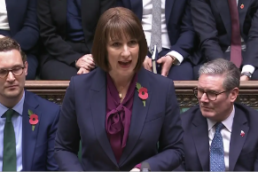Gender pay match fails to bloom again
Spring sometimes feels more like the start of the year than the 1st of January. It brings the promise of brighter days and renewal, with the blossoming of nature symbolising the shift from the weight of winter.
But it seems that one regular feature of Spring is particularly resilient to any rebirth or reinvention and that is the news around the pay gap between men and women.
Since April 2018, larger employers have been obliged to publish their gender pay gap information each year, under the Equality Act 2010 (Gender Pay Gap Information) Regulations.
These apply to all private, public and voluntary sector organisations with 250 or more employees, who must publish details annually of their gender pay gap, for both basic pay and any bonus payments. The information must be published electronically on their own website and uploaded to a dedicated government space where it is available for public search and review.
The aim is to measure differences between the average pay of men and women in an organisation, not just whether men and women are receiving equal pay for equal work. The figures show the distribution of men and women at different levels across the organisation, highlighting whether an organisation is promoting or appointing women into more senior roles, or whether men are dominating the higher-paid jobs. If so, then the organisation will have a gender pay gap, even if men and women are paid equal pay for equal jobs.
But hopes that requiring companies to publish this information might inspire a shift seem to have been overly ambitious, with the latest figures showing that the overall gender pay gap in the UK is resolutely static, or even widening in some areas.
Analysis of Government-published data on the reporting suggests that men are paid more than women in almost 80% of companies, higher even than when data was first collected in 2017. During the same period, the average pay gap has also widened: men’s median hourly pay is 12.2% more than that of women, compared with 11.9% in 2017.

Women should take a tip from the research and work together to tackle the divide which means they work for ‘free’ compared to men, for as much as 3 months in each year.
Longer term data collection on gender-related pay differences has been undertaken by the Office for National Statistics, through the Annual Survey for Hours and Earnings (ASHE). This is a measure across all jobs in the UK, not of the difference in pay between men and women for doing the same job.
Looking at the ASHE figures, the media gender pay gap for all employees presently stands at 14.9%.
Analysis of the figures by the TUC shows that the gender pay gap starts to widen where women take time out for children, and rises steeply after that, with older women taking the biggest financial hit.
Women aged between 50 and 59 have the highest pay gap at 20.8%, working the equivalent of 76 days for free, until Thursday 16 March 2023. And women aged 60 and over have a gender pay gap of 18.4%, equating to 67 days before they stop working for free.
This pay divide also translates into the pension divide, with women less able to save for retirement than men at each life stage.
Data shows the gender pay gap is largest in the south east of England (17.9%) followed by the east of England (17.5%) and the East Midlands (16.6%).
By sector, the biggest divide is in the finance and insurance sector where the gender pay gap is 31.2%
The concept of “women’s pay day” was devised to provide a tangible comparison of the impact of the gender pay gap. This works by calculating the day when the average woman stops working for free, when compared to the average man.
The median pay gap of 14.9% translates as 54 days – nearly eight weeks – before a woman will stop working for free. This year, Women’s Pay Day was 23 February, and for those in the financial sector, the equivalent is 114 days, meaning that women work for free for nearly a third of the year until 23 April in that sector.
Taking action
Women working together can support each other in seeking out and tackling unfair treatment and exclusion. The gender pay divide starts to kick in when women reach their late 20s, rising steadily from there. Supporting, mentoring and encouraging others to seek out promotion and pay rises, guiding younger women to avoid being sidelined early on can help change things for the future.
If you’re not already part of the community where women share, join now and help shift the dial on equal pay and promotion opportunities.
Further reading:
Author

Maggie Taylor
Founder of Lumin, creating opportunities for women solopreneurs to collaborate, grow, and build successful businesses, fuelled by shared knowledge, mentorship, and real partnerships across generations
Related Posts
tackling the gender wealth gap
The gender pay gap is widely discussed, but its ripple effects extend into a…
06/12/2024life,finances,missionLumin Community,women change makers,gender pay gap,gender pension gap,Vanesa Pazos,EmpowerHer,gender wealth gap,NoBa Capital,women investors,women mentoring women
why women work for free
Equal Pay Day 2024 will be 20th November – the day when far too many women will…
14/11/2024business,finances,missiongender pay gap,Fawcett Society,Equal Pay Day,financial inequality
first woman chancellor fails to move dial for women in work
This week’s budget from Rachel Reeves was disappointing from a female…
01/11/2024LUMIN,finances,mission,entrepreneurs,careersChancellor,Budget,gender pension gap,childcare,business funding,gender pay gap,Rachel Reeves,Autumn Statement,Labour



